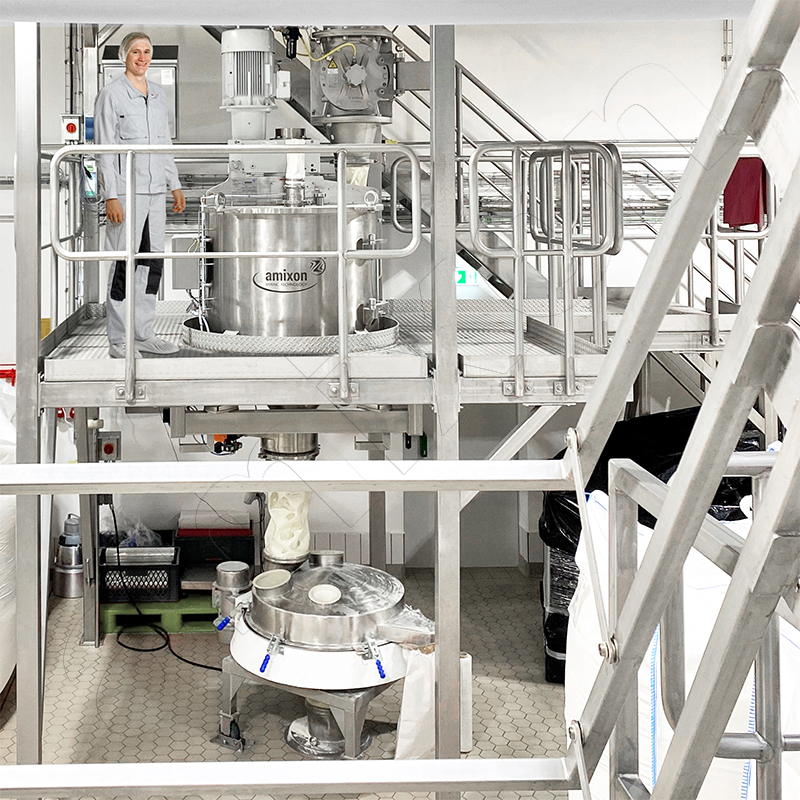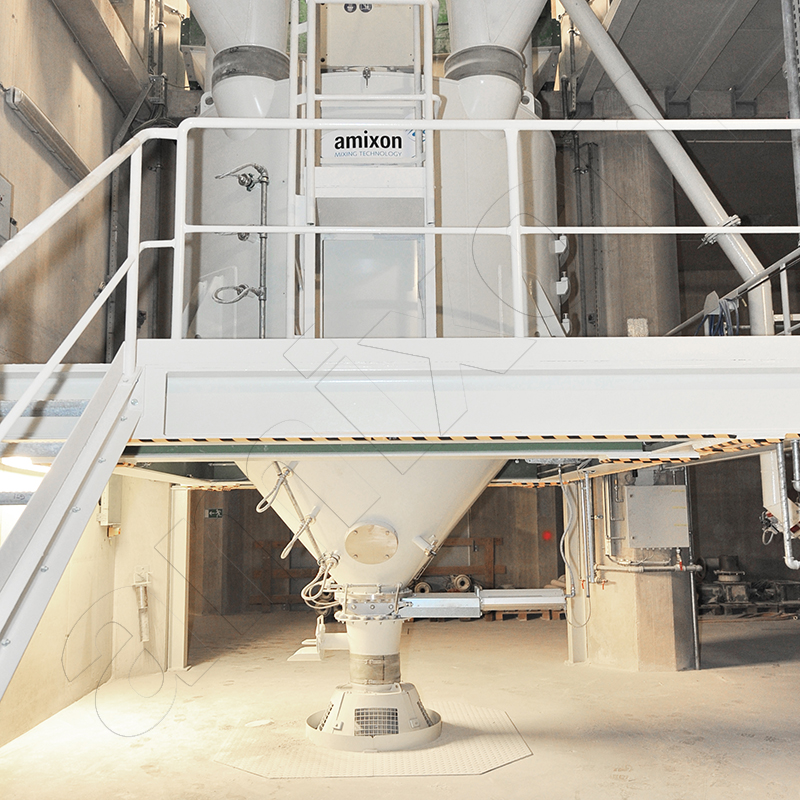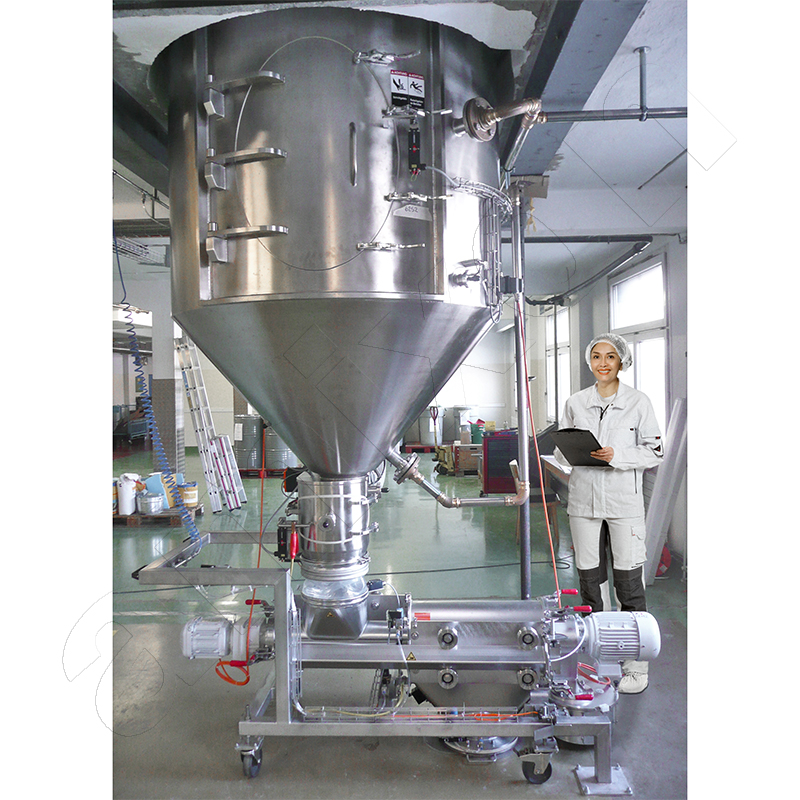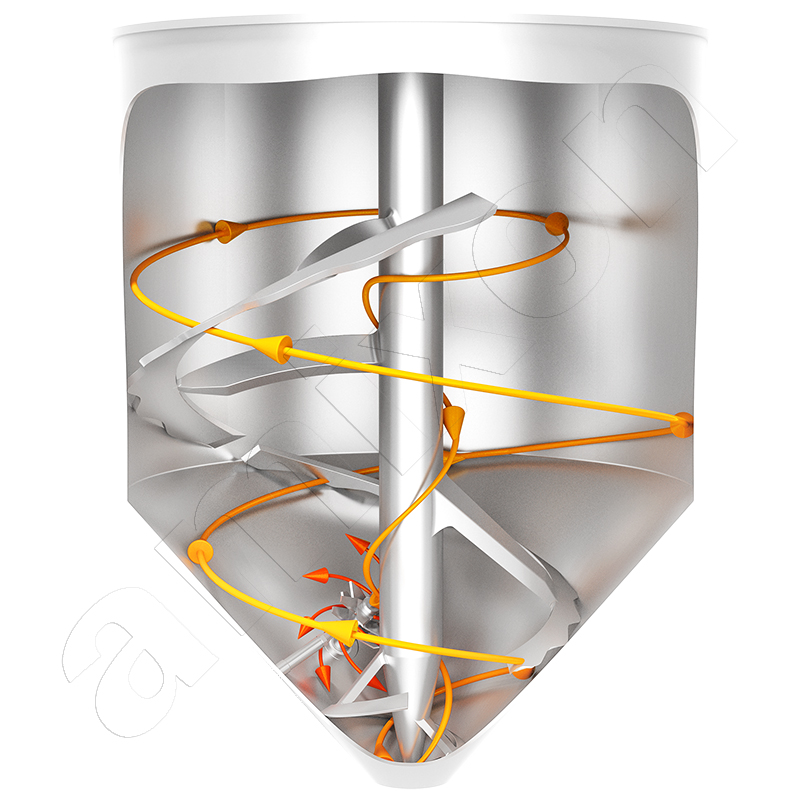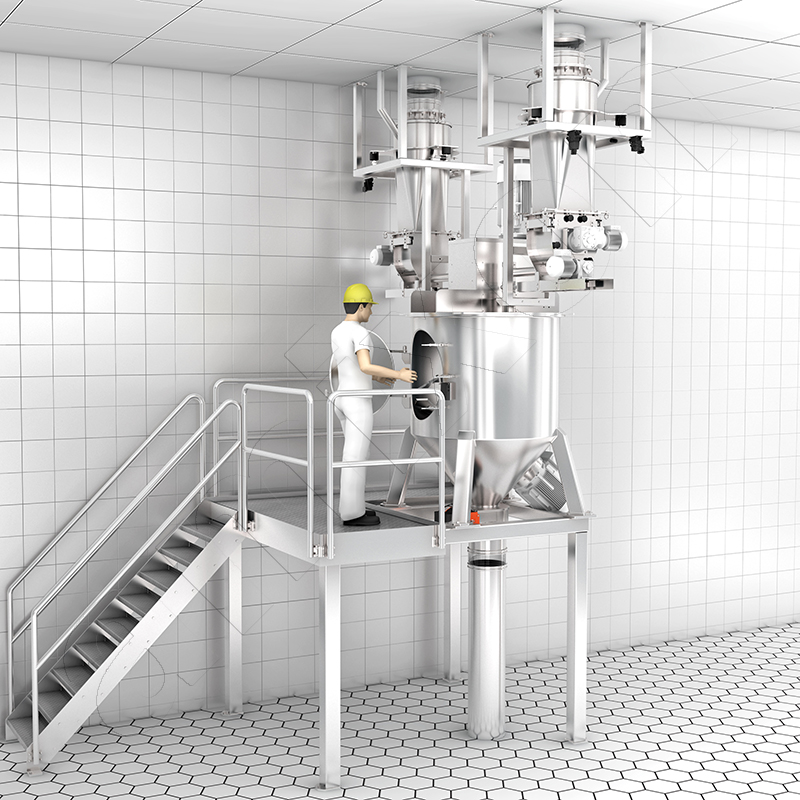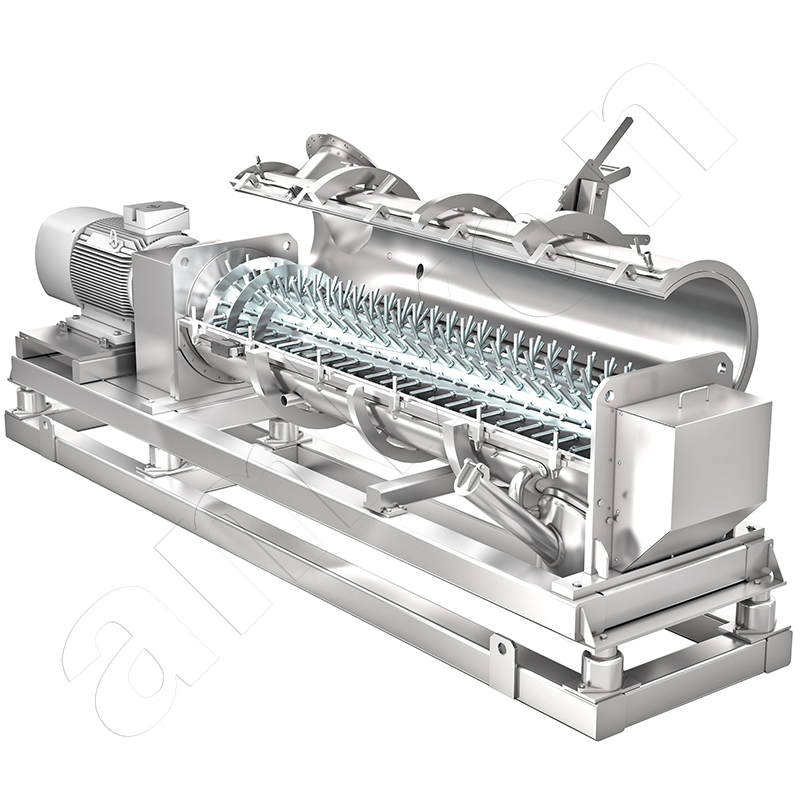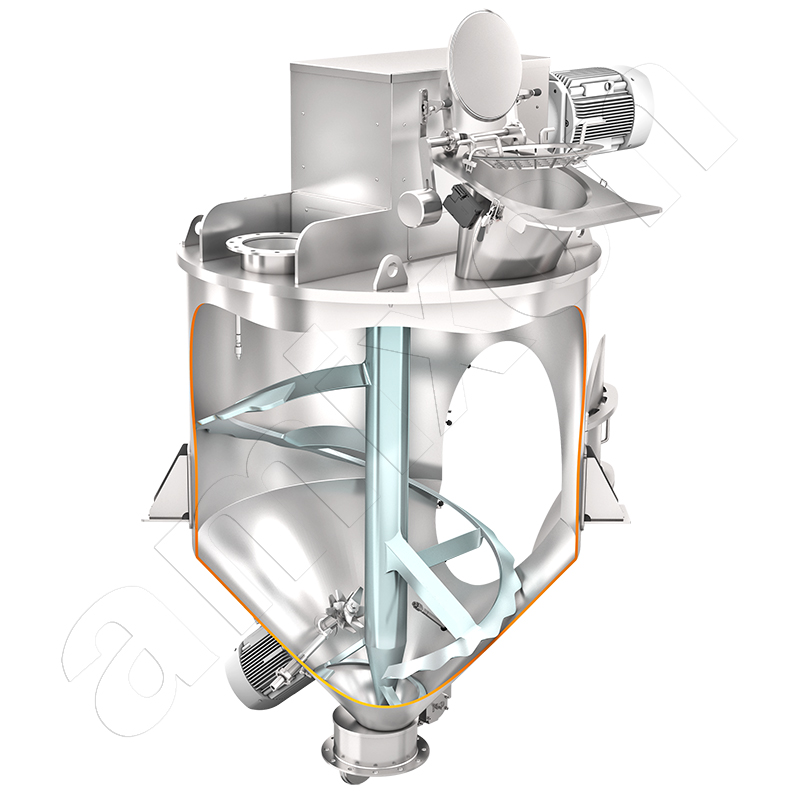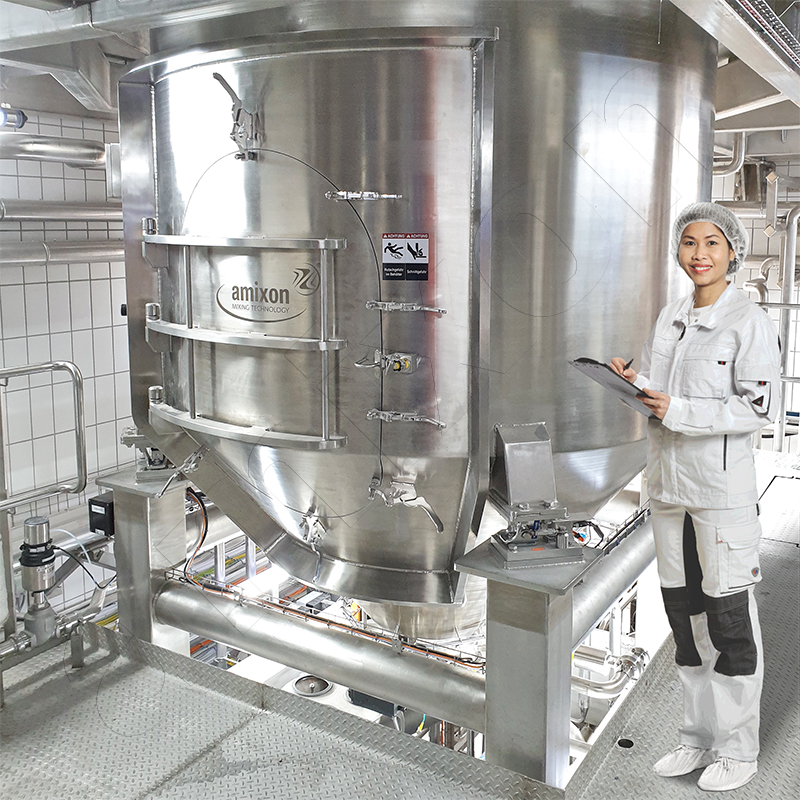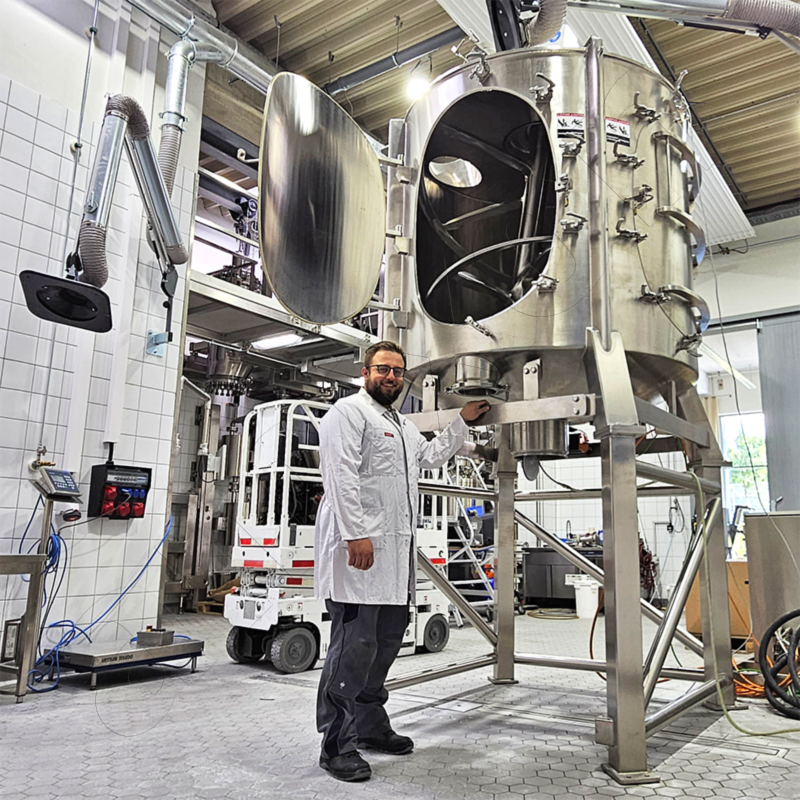FAQ – amixon® mixer for continuous mixing processes
An amixon® conical mixer is used both as a batch mixer and as a continuous mixer. In this blog post, we address typical questions from our customers. If you have any further questions on this topic, please do not hesitate to contact us. The amixon® team will be happy to advise you. On request, we can demonstrate both processes in the technical centre.
In another blog post, we compared the various advantages of batch mixing and continuous mixing. The amixon team looks forward to your questions and will be happy to advise you in detail!
Is it really possible to use an amixon® conical mixer as a continuous mixer?
Yes, it is possible: Highly accurate and without start-up losses. The dosing systems located above are required for this purpose. The continuous mixing process is started as follows:
At the beginning, the discharge device of the mixer is closed. All gravimetrically operating dosing units are started simultaneously with a low mass flow and automatically synchronize with each other. Any dosing errors from the dosing start are also corrected. The filling level of the mixer increases continuously, with the mixer drive only starting at approximately half the filling level in order to preserve the mix.
When
- all dosing units have reached their stationary operating point and
- the recipe-compliant load entry has been achieved, and
- the desired filling level is present in the mixer,
the discharge device opens slowly and the ideally mixed product is continuously discharged from the mixer. Optionally, the metering flows can now be increased with continuous adjustment.
Normally, the first 30 to 50 kg of mixing compound are separated out as so-called start-up losses, when a continuous powder mixing process is started?
Yes, this is normally the case. But not when the amixon® conical mixer described here is used. From the very first gram to the end of the mixing campaign, only ideally mixed product is produced. Typical dosing fluctuations at the start are corrected by the system itself. Any unintentional metering fluctuations are compensated for as best as possible.
The AMK 10000 continuous mixer shown above rests on load cells, and the conveyors installed above it are high-precision gravimetric feeding systems. If the mixer is operated continuously, it has a capacity of up to 120 t/h. However, the mass flow can also be reduced to 20 t/h.
The mixer type shown on the left is a ring layer mixer. It realises the classic pipe flow. The "first in first out" principle applies. This type of mixer can only be used for continuous mixing processes. This machine generally works with low filling levels. The dwell time of the mix is relatively short. The speed, mixing intensity and energy input are relatively high. Start-up losses cannot be avoided with this type of mixer.
The main area of application for ring mixers is the deagglomeration, grinding, wetting and agglomeration of powders/suspensions at high speeds.
The conical mixer looks basically identical to an amixon® batch mixer. Can the same mixer be used for both processes?
That is exactly the case. If the same mixer is operated on a batch basis, it can mix differing batches of approx. 1 m³ to 10 m³ with technically ideal precision as a batch. This can be, for example, a high-quality premix consisting of many small components.
During continuous mixing, this premix can then be used later. This procedure is always suitable if the number of dosing systems is lower than the number of raw materials.
Gyraton® mixers can also be used for continuous mixing processes. They are particularly interesting when bulk materials need to be mixed economically and precisely in large quantities.
We can also demonstrate such continuous mixing processes in our pilot plant.
© Copyright by amixon GmbH

